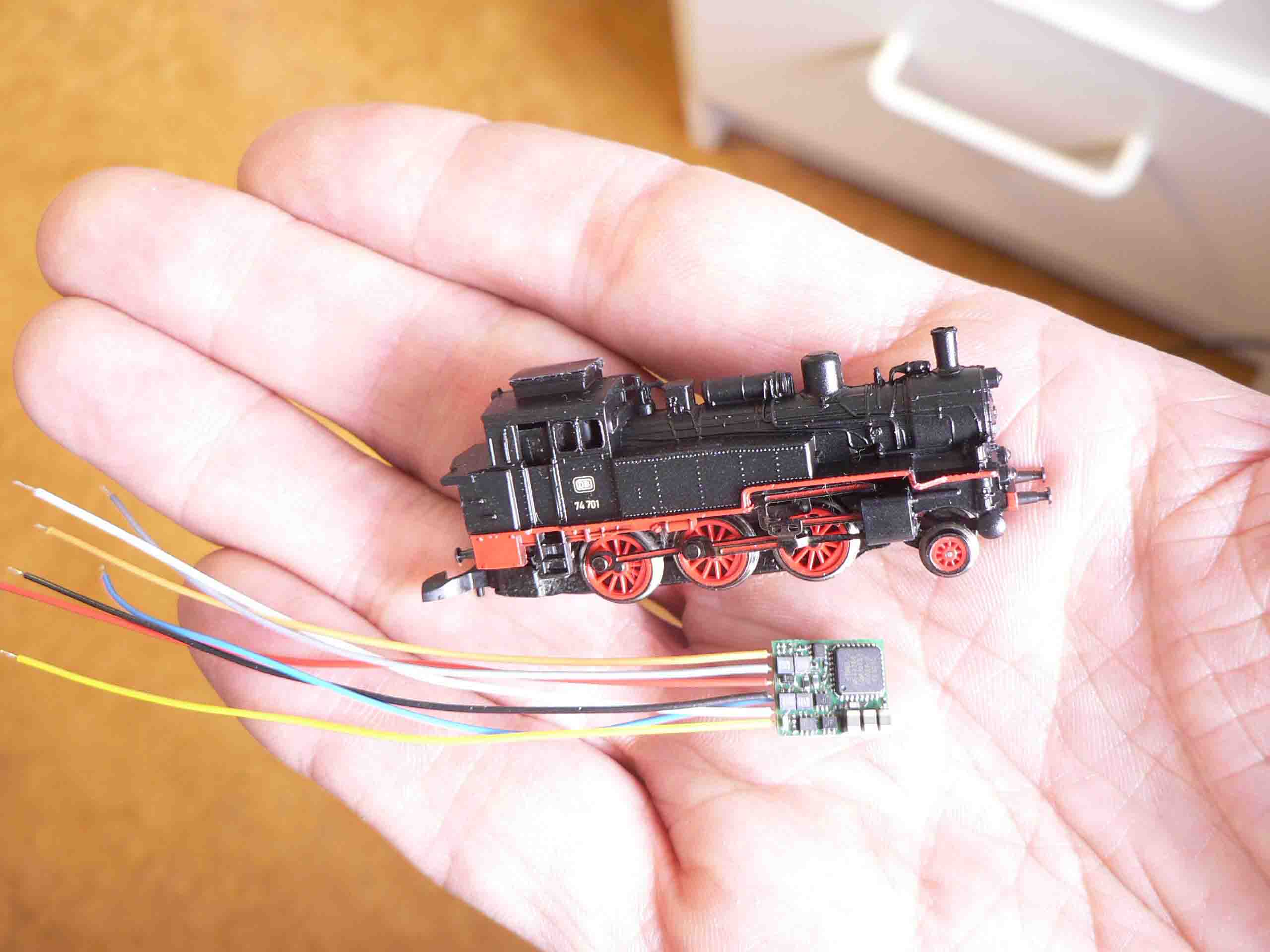
The Challenge: Digital control in the z-scale
digital-controlled model trains is commonplace for decades. Most manufacturers sell ready-made digital products in most model scales. The exception is the z-scale, i.e. 1:220 (and more recently also even smaller scales, such as T-gauge). By default, only analog locos are produced.
Of all different scales the z-scale has a relatively small number of practitioners. Z-people tend among model railoaders almost be considered a small sect. In this limited group is an even more exclusive group, which goes digital. Probably not because it is easy, but rather because it's hard! The challenge is part of the point! The picture shows the decoder built into the locomotive for digital operation.
Why digital? Because digital technology is exciting. As for model trains it will open new possibilities to control a variety of things. Here are some examples:
It is perhaps only a matter of time before digital operation is standard even in the Z scale. But for me it was a challenge to try to master this technology myself. On the Internet you can exchange tips in the small group of digital z-enthusiasts around the world...
The trend is towards even better technology in increasingly smaller sizes. The locomotive decoder I now use -Lenz Mini Gold- is far better than those I used in my first attempts. They are much smaller, thus easier to mount. They are better secured against all sorts of incorrect wiring. In the beginning overheated decoders was a recurring problem and many times I have seen a slight smoke trail, followed of the special smell of fried electronics! The rail voltage has also been a critical factor, but most of these problems seem now to be solved. If decoders nowadays melt, it is usually due to the extreme lack of space in the Z-locomotives. If a cable fit just a little bit wrong inside the engine, it may be short circuit and it is literally game over.
Much tinkering has also been involved in software Train Controller from Railroad & Co. It is very advanced and sophisticated, but not easy to grasp for the uninitiated. I have never experienced such a tough learning curve with any computer program. It is often an educational issue. To write a manual that is user friendly, sometimes seems be harder than making the program itself. In the beginning, I had major problems getting the train moving (via computer) at all, on the simplest oval track. It turned out that even the computer interface from Lenz was a culprit. Wrong version, it turned out at last...
Accomplishing a fully functional block system, where trains wait for each other and follow each other around the layout over different tracks at the station and reverse loops, that was not quite easy, to say the least. Many hours of trying and thinking. Many components and many parameters that must be right. But finally I could enjoy the sweets of victory!